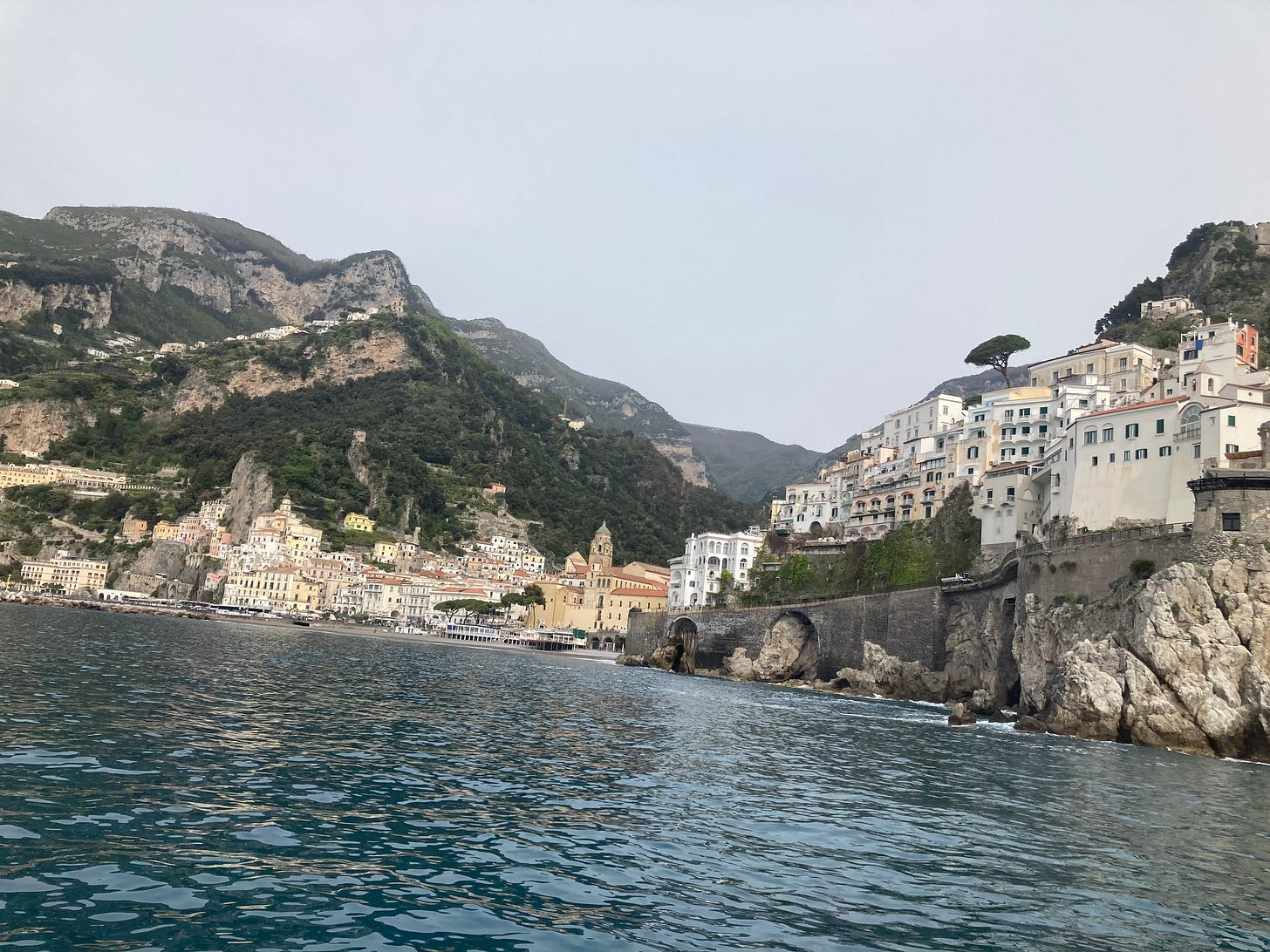This week, and next, I’m in Italy, travelling with a wonderful group of people, from the south to the north. On Wednesday I arrived by train into Salerno, then this morning, we started out in Amalfi and tomorrow we’re off to Pompeii.

The weather is lovely, the scenery sublime, the terraces of lemon tees, beautiful and fascinating from a historical and agricultural perspective. (They were brought as a crop to the region in the Middle Ages to improve the health of sailors in the maritime republic of Amalfi, and thrived so well that apparently there can be four lemon harvests a year around here!)

At least so far, we’re going mostly to places I’ve been before, but not for 21 years. The last time I was here I was seventeen and travelling as a keen Latin student with my parents, just before going to university. Mom and dad were brilliant and patiently bore with me taking them to EVERY site in Campania even distantly related to the eruption of Vesuvius in 79 CE, in the middle of a heatwave, on public transport.
Looking at it all again, I still remember that as the most wonderful holiday but I also can’t believe how much I didn’t even realise I was seeing. Now, when I look, the whole landscape looks so… medieval.
I remember the Cathedral of Amalfi looking beautiful. I do not remember thinking that its style was a clear and distinctive blend of Norman, Byzantine and Muslim (mostly Fatimid) influences. Now it seems so obvious: the striped stonework, the mosaics, the delicate stone lattice in the arched window frames, the bronze doors looted from Constantinople in 1204, along with the body of St Andrew the Aspotle, to whom the church is dedicated.

I remember that the sea was very blue in the bay, but I do not remember thinking about how many ships might fit into that harbour in the twelfth century and what the implications of that might be for running a Mediterranean-wide trading empire.

I remember that my dad was completely freaked out by the bus ride along the Amalfi coast road, and the cliff edge does look pretty close and the driving pretty confident, considering that. I do not remember noticing the chain of ‘Saracen forts’ strung out along the hillsides, which were built between about the 9th and the 12th centuries to provide warnings of pirate raiding from the sea. (Saraceni was a very flexible term that could, in medieval Italy, mean any or all of Muslims, Arabs (or people whom people thought were Muslims or Arabs) and pirates.)

Tomorrow, we return to Pompeii, and I remember feeling when I last stood there, as if out of the corner of my eye, I might just catch sight of a Roman, bustling about on their business, as if the terrible eruption of Vesuvius and the nearly 2,000 years since had never happened. I hope that I feel that way again. I remember it feeling so close that there was no doubt in my mind that the people of the past were completely real and whole, not just stories on a page. It is a feeling I’ve followed right into being a historian, even if, back then, I thought I was definitely going to become an interpreter.
I’ll let you know! But in the meantime, in a glorious serendipity, on the day I was giving my lecture about Pompeii, the current excavation team put out a press release announcing the discovery of a gorgeous and unexpected room: a white mosaic floor and black walls, with gorgeous coloured images. The theory is that the dark colour would hide the soot stains from lamps and create an atmospheric evening dining space.

There is also an interesting inscription on an image (above) from the black room identified as Paris kidnapping Helen of Troy. It reads, in Greek, ‘Alexandros’ then, below that, ‘Eleni’. I can’t wait to hear, as the team work more on the new finds, whether this was a commentary on the image, or graffiti, but it is, at least, a valuable reminder of the cosmopolitanism of Pompeii, where Greek could be written on the walls and, in another recent discovery of a tomb inscription, a freedman could become wealthy enough to sponsor theatrical performances in both Latin and Greek.
It is strange thinking back to who I was when I last saw some of these sites, and about how much scholars have learned about that past since. And it is an extremely exciting reminder of how much there still is to find and learn!





